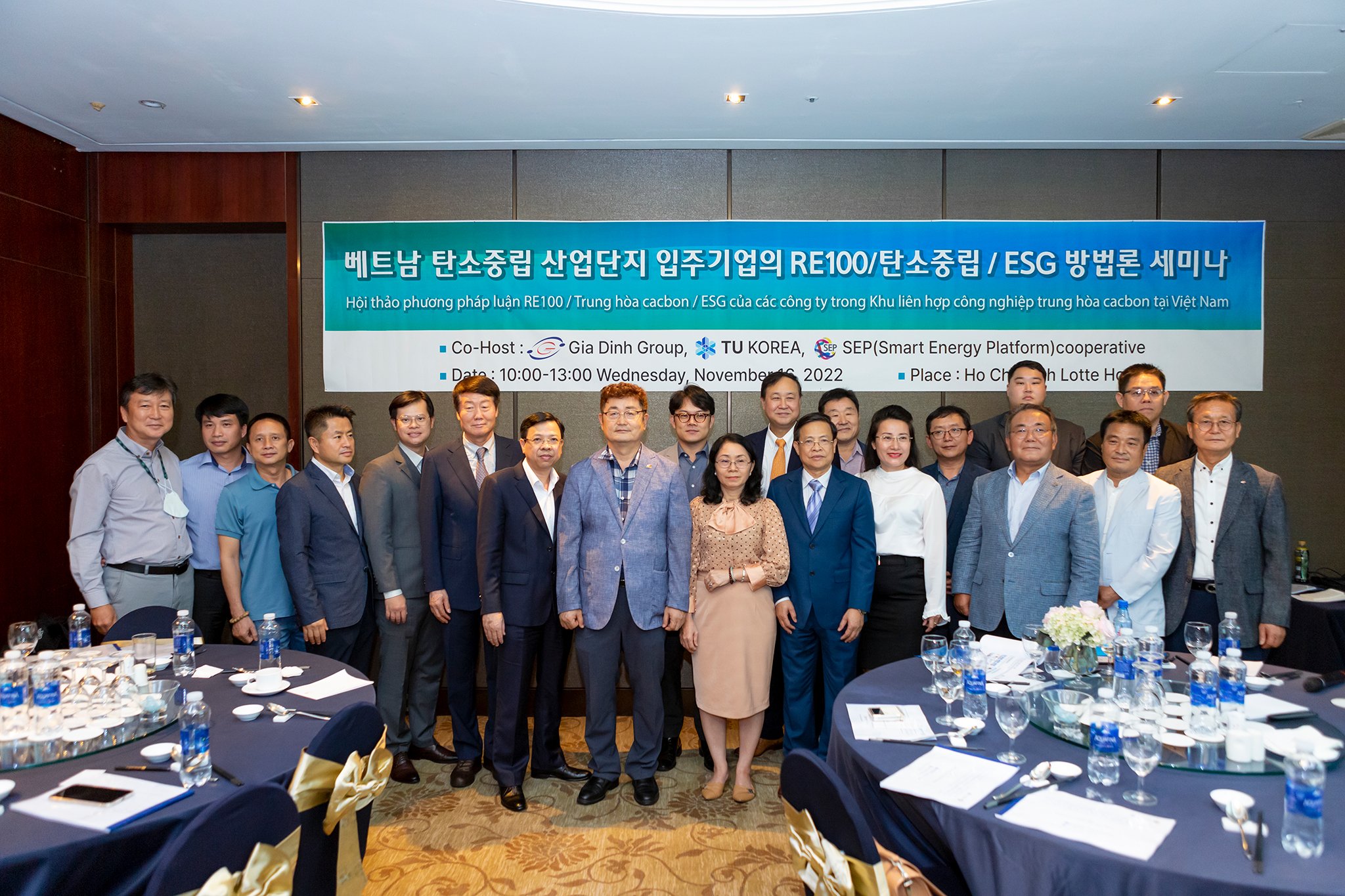RENEWABLE ENERGY TOWARDS NET ZERO CARBON
STRATEGIC DIRECTION
- Investing and managing solar and wind power projects.
- Cooperate in investing in biomass power from waste incineration projects.
- Participate in international carbon neutral cooperation (Net-Zero, combating global climate change in industrial clusters in Binh Duong province
- Investing in carbon credit distribution and consulting
RENEWABLE ENERGY TOWARDS NET ZERO CARBON
Gia Dinh Group aims to develop the Carbon market, towards Net Zero The Carbon market is considered the solution and key to achieving the Net Zero goal for Vietnam in the coming time.
The market operates on the principle that "polluters" must pay a fee to compensate for emissions into the environment through the trading and exchange of carbon credits. The state collects budget revenue when it applies fees from the exchange of quotas, carbon credits or carbon taxes in the future.
Net zero emissions or "Net Zero" is Vietnam's strong political commitment at the 26th United Nations Framework Convention on Climate Change Conference (COP26). To address the above challenges, the Government of Vietnam has issued a legal framework to synchronously implement solutions and set future strategies and goals, including building a development policy framework. carbon market.
To make it a reality, Gia Dinh Group and Korean SEP Group are participating in international carbon neutral cooperation (Net-Zero) to cope with global climate change at Phu Giao Industrial Cluster, Phu Giao province. Binh Duong, Vietnam. After signing a cooperation agreement in the presence of the Department of Industry and Trade of Binh Duong province, the Korean National Information Technology Industry Promotion Agency (NIPA) and Korea University of Technology on April 13, 2023.
We are starting to implement power exploitation projects in the period from 2025 to 2030, with a vision to 2050 according to the policy of the Government of Vietnam at: Tam Lap Industrial Cluster, Phu Giao district, Binh Duong province on a total area of planning (ha): 103 (ha).
As follows:
- Rooftop solar power project with project capacity of about 40 MWp. Biomass power project from waste incineration with system capacity of 1.5MWh.
- Rooftop solar power project with project capacity of about 40 MWp. Biomass power project from waste incineration with system capacity of 1.5MWh.
Together promote green transformation of businesses in Industrial Parks and Industrial Clusters that Gia Dinh has been investing in, as well as aiming for Energy Projects in Huu Lung Industrial Park - Lang Son in the period 2025 to 2030, vision 2050.
BENEFITS OF RENEWABLE ENERGY
Compared to energy generated from fossil fuels, renewable energy has many more benefits, including:
- It is a completely clean energy source, friendly to nature and minimizes pollution to the environment.
- It is a completely renewable energy source.
- Renewable energy is also very rich and diverse such as wind, solar, trash burning, tides...
- It is a free source of energy.
- Renewable energy has high durability, low maintenance and repair costs.
- When used, it will help save energy for households, businesses, and factories
Solar
Solar energy is the most widely known clean energy source. We can exploit this energy source thanks to modern technologies such as heating, photovoltaics, and artificial photosynthesis.
Wind energy
Like solar energy, wind energy is also increasingly popular and will play an important role in the future. This energy source is generated by wind power through wind turbines. In particular, wind turbines are often large-scale and have capacities from 600 kW to 9 MW. When wind speed increases, electricity output increases and reaches maximum capacity for the turbine.
Biomass energy
Biomass energy has been used since ancient times, when people knew how to burn wood and coal to create heat. Wood is still the main source of energy for generating biomass energy. Besides wood, other products used are plants, crops, waste, industrial waste, trees and agricultural waste.

